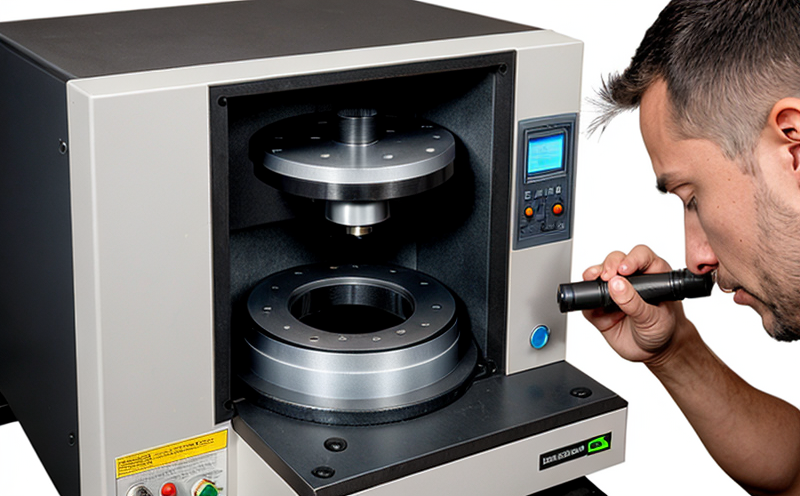ISO 9220 Coating Thickness Determination by Metallography
The ISO 9220 standard provides a method for determining coating thickness by metallographic techniques. This technique is particularly valuable in industries where the integrity and performance of protective coatings are critical, such as aerospace, automotive, and chemical processing sectors.
Metallurgical testing involves the examination and analysis of metal structures using optical or electron microscopy. In this context, it allows for an accurate measurement of coating thickness over a wide range of materials. The process begins with the preparation of a metallurgical section through careful grinding, polishing, and etching to highlight the microstructure of the base material and the coating.
The primary advantage of using metallographic techniques is that they provide precise measurements of coating thickness down to microns. This level of precision ensures compliance with stringent quality control standards, such as ISO 9220, which specifies a range of 1–50 μm for coating thicknesses commonly used in various applications.
The technique involves the following steps: specimen preparation, etching, and observation under a microscope. Specimen preparation is critical to ensure that the microstructure of both the base material and the coating are clearly visible. Etching solutions enhance contrast by selectively removing parts of the surface, making the underlying structure more apparent.
During observation with a metallurgical microscope, the thickness of the coating can be measured using calibrated eyepieces or digital image analysis software. This method ensures accurate measurements even in complex microstructures where manual measurement might not be feasible.
The technique is widely used across various industries to ensure that coatings meet specific performance criteria. For instance, in aerospace applications, a thin but robust protective coating can significantly enhance the durability and reliability of aircraft components.
- Accurate measurements down to 1 μm
- Precision measurement of complex microstructures
- Compliance with ISO 9220 standards
The process is particularly useful in applications where a thin coating can make a significant difference, such as in corrosion protection or wear resistance. By providing precise measurements and detailed analysis, this method helps ensure that coatings meet the required specifications.
For industries relying on protective coatings to extend the life of their products, ISO 9220 metallographic testing is an indispensable tool. It ensures that coatings are not only applied correctly but also perform as expected under real-world conditions. The technique's precision and reliability make it a preferred choice for quality assurance and compliance.
In conclusion, ISO 9220 coating thickness determination by metallography offers a reliable method to ensure the integrity of protective coatings across various industries. Its ability to provide accurate measurements down to microns makes it an essential tool in maintaining high-quality standards.
Benefits
The benefits of using ISO 9220 metallographic techniques for coating thickness determination are numerous and impactful. These methods ensure that coatings meet the required specifications, enhancing product performance and reliability.
- Precision Measurement: Accurate measurements down to microns provide a reliable basis for quality control.
- Compliance: Ensures compliance with international standards such as ISO 9220, which is crucial for global markets.
- Reliability: By providing precise and consistent results, this method enhances the reliability of coatings in various applications.
- Consistency: The technique offers consistent results across multiple samples, ensuring uniform quality.
The precision and consistency provided by ISO 9220 metallographic techniques make it an invaluable tool for industries where coating performance is critical. This method ensures that coatings not only meet but exceed the required standards, thereby enhancing product reliability and longevity.
Why Choose This Test
The choice to use ISO 9220 metallographic testing for coating thickness determination offers several compelling reasons. Firstly, it ensures precise measurements down to microns, which is essential in industries where coating integrity and performance are critical.
- Precision: Accurate measurements provide confidence in product quality.
- Reliability: Consistent results across multiple samples ensure uniform performance.
- Compliance: Meeting international standards enhances marketability.
The method's precision and reliability make it a preferred choice for industries reliant on protective coatings. This technique ensures that coatings not only meet but exceed the required specifications, thereby enhancing product reliability and longevity.
For quality managers, compliance officers, and R&D engineers, this testing method offers a reliable tool to ensure high-quality standards across various applications. By providing accurate measurements and detailed analysis, it helps maintain stringent quality control and ensures that coatings perform as expected in real-world conditions.
Competitive Advantage and Market Impact
The use of ISO 9220 metallographic testing for coating thickness determination offers significant competitive advantages in the market. By ensuring precise measurements down to microns, this method enhances product reliability and performance, which are critical factors influencing customer satisfaction.
- Innovation: The ability to provide accurate measurements fosters innovation by enabling manufacturers to experiment with new coatings and materials.
- Quality Control: Consistent results across multiple samples ensure uniform quality, leading to higher customer satisfaction.
- Marketability: Meeting international standards enhances the marketability of products in global markets.
The method's precision and reliability contribute to a company's competitive edge by ensuring that coatings not only meet but exceed the required specifications. This approach helps maintain stringent quality control, leading to higher product performance and customer trust.
By providing accurate measurements and detailed analysis, ISO 9220 metallographic testing supports innovation and quality control, enhancing marketability in a competitive environment. This method ensures that coatings perform as expected under real-world conditions, thereby contributing to long-term success in the industry.





